
Tutankhamun may have died more than 3,300 years ago, but it is still possible to 'attend' the pharaoh's funeral via the painted scenes discovered inside his burial chamber. On the east wall we see the mummified king lying in a coffin on top of a bier on board a boat, which is itself standing on a wooden sled. Twelve of Egypt's highest-ranking dignitaries, all dressed in white linen, have assembled to drag the funerary sled across the desert to the Valley of the Kings. Meanwhile, on the north wall of the chamber, the funeral procession has reached the tomb, with Tutankhamun's mummy propped upright and his successor, King Ay, dressed in a priestly leopard skin to conduct the rituals that will allow the dead king to live again. There is one key omission from these scenes, however. Nowhere in these paintings do we see Tutankhamun's widow, Ankhesenamun (formerly also Ankhesenpaaten). If we want to learn more about the woman who supported her husband in life and death, we instead need to take a closer look at some of Tutankhamun's 5,000 grave goods.
A FRIENDLY RELATIONSHIP
The Little Golden Shrine', a doored box covered in thick gold foil, is one of Tutankhamun's most enigmatic grave goods. A series of engraved panels on the golden exterior shows the king and queen together. Ankhesenamun fastens a collar round her husband's neck, receives water that he pours into her cupped hand, and supplies him with arrows as he shoots ducks in the marshes. Howard Carter, who led the discovery of the tomb in November 1922, believed that these scenes reflected the daily life of the king and queen, with Ankhesenamun playing a minor role: "The dominant note is that of friendly relationship between the husband and the wife."
Denne historien er fra November 2023-utgaven av BBC History Revealed.
Start din 7-dagers gratis prøveperiode på Magzter GOLD for å få tilgang til tusenvis av utvalgte premiumhistorier og 9000+ magasiner og aviser.
Allerede abonnent ? Logg på
Denne historien er fra November 2023-utgaven av BBC History Revealed.
Start din 7-dagers gratis prøveperiode på Magzter GOLD for å få tilgang til tusenvis av utvalgte premiumhistorier og 9000+ magasiner og aviser.
Allerede abonnent? Logg på

'Dickens's evocation of the fears, excitement and confusion of childhood is peerless'
DR LEE JACKSON ON WHY CHARLES DICKENS REMAINS RELEVANT TODAY
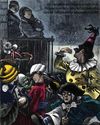
THE AUTHOR GOES ABROAD
Dickens expanded his horizons and boosted his fan-base by venturing overseas - but global fame came with a cost
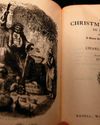
REVIVING THE FESTIVE SPIRIT
A Christmas Carol wasn't just a bestseller - it changed the way that Britons chose to mark the festive season

GIVING THE POOR A VOICE
From Hard Times to Oliver Twist, Charles Dickens used his pen to help illuminate the lives of the less fortunate

A JOURNEY THROUGH DICKENS'S LONDON
The works of Charles Dickens are synonymous with visions of Victorian London. We talk to Dr Lee Jackson about the author's love of the capital, and the locations that most inspired him
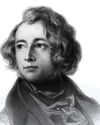
EXCEEDING EXPECTATIONS
Dr Lee Jackson chronicles Charles Dickens's journey from down-at-luck teenager to titan of Victorian literature

GIFTS, TREES & FEASTING
We take a journey through the photo archives to reveal how Christmas and its many traditions have been celebrated over the years - and around the world
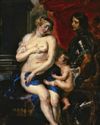
WHAT GREAT PAINTINGS SAY
We explore the story behind an allegorical painting that celebrates the triumph of love over hate, peace over war
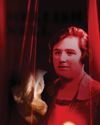
HELLISH NELL
Malcolm Gaskill delves into the life of Helen Duncan - the fraudulent Scottish medium whose ectoplasm-filled seances saw her ending up on the wrong side of the law

7 THINGS YOU (PROBABLY) DIDN'T KNOW ABOUT THE WHITE HOUSE
Presidential historian Dr Lindsay M Chervinsky reveals some of the most surprising facts about the world-famous US residence